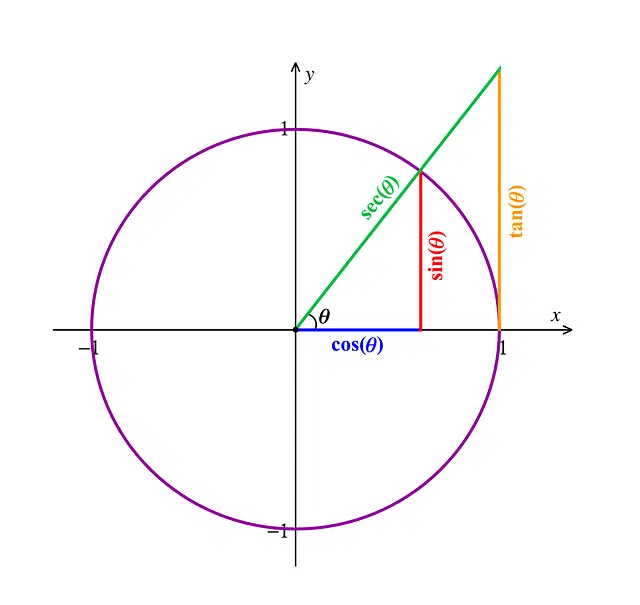
The inverse function of the sine of an angle or arc is called a cosecant.
Cosecant is the inverse function of the sine of an arc or an angle. It is a concept that is used in the field of trigonometry , a branch of mathematics linked to geometry.
To understand what the cosecant is, you first have to know what the sine is. This function , in a right triangle, is obtained by dividing the leg opposite an acute angle and the hypotenuse. It should be remembered that the hypotenuse is the longest side of a right triangle, while the other two sides are called legs .
Therefore, if the sine is equal to the opposite leg divided by the hypotenuse, the cosecant is obtained by dividing the hypotenuse by the opposite leg since it is the inverse function. The same result is obtained by obtaining the quotient of 1 and the sine .
Example of cosecant
In a right triangle whose hypotenuse measures 10 centimeters and the opposite leg measures 4 centimeters, the cosecant will be equal to 2.5:
Cosecant = Hypotenuse / opposite leg
Cosecant = 10 / 4
Cosecant = 2.5
This can be checked by dividing 1 and the sine. If the sine is equivalent to the opposite leg divided by the hypotenuse:
Sine = Opposite leg / Hypotenuse
Sine = 4 / 10
Sine = 0.4
And then:
Cosecant = 1 / Sine
Cosecant = 1 / 0.4
Cosecant = 2.5

The cosecant has several practical applications.
Your relationship with the breast
It should be noted that the relationship between the cosecant and the sine is similar to that maintained by the cosine function with its inverse, the secant , and to the link established by the tangent and cotangent functions (its inverse).
Given that all these functions are practically impossible to solve mentally for most people, and that in everyday calculations the values of the given angles are usually more or less the same, it is possible to prepare a table with the cosecant of the smallest angles. common, among which are null (0°), 30°, 90° and 270°, among others.
Using the cosecant function
It is important to understand that the cosecant may seem too abstract compared to other parts of the world of numbers if we look at it from the way that most people use mathematics in their daily lives, but it is a very useful function that It has practical applications to solve different problems that do have an impact on our daily lives, even if we do not know it.
For example, both the cosecant and the rest of the functions expressed above are used very frequently in the field of computer programming, to solve problems when developing a video game or a three-dimensional animated film. Let us not forget that behind computer-generated images there are millions of geometric figures , the most important being the triangle, and it is precisely the latter that especially takes advantage of the cosecant to resolve, for example, the values of its sides.
Triangles, in turn, have more than one application in the world of three-dimensional graphics: on the one hand, they are the basis of the models, that is, of the characters and settings, since they are built from them, although once several rendering techniques are applied their presence is almost not noticeable and the surfaces take on a "soft" appearance; but the triangle can also serve as an imaginary guide to compute the position of a point after a certain translation, and that is where the use of the cosecant can help us.
If we have a right triangle of which we know one of its angles and its opposite side, we can begin by developing the cosecant equation of the angle = hypotenuse / opposite to find out the value of the hypotenuse, since we know the other two.
